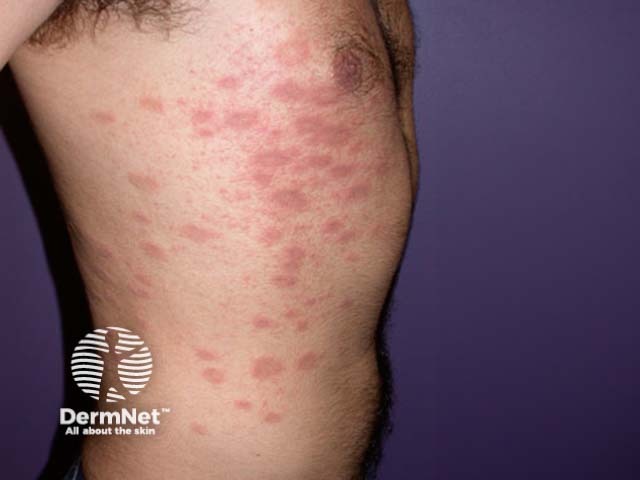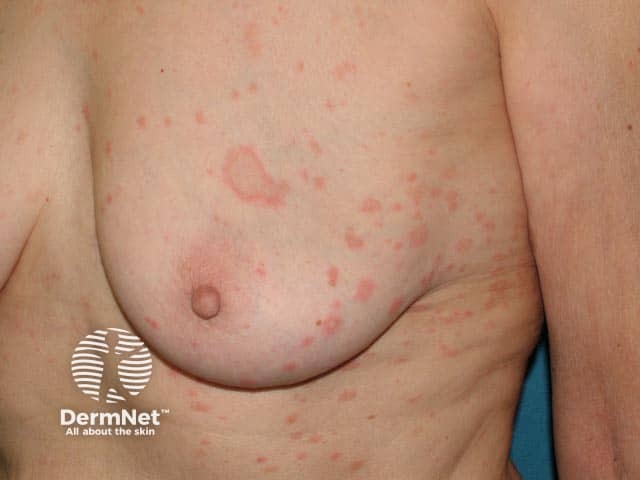Main menu
Common skin conditions

NEWS
Join DermNet PRO
Read more
Quick links
For each of the ten cases, study the image(s) and then answer the questions. You can click on the image to view a larger version if required.
Each case should take approximately 2 minutes to complete. There is a list of suggested further reading material at the end of the quiz.
When you finish the quiz, you can download a certificate.


What is the diagnosis?
Pityriasis rosea
What are the clinical features of this condition?
Most patients with pityriasis rosea are between 10 and 35 years, and it is more common in females. Typically the first sign is a solitary oval pink patch with a collarette of fine scale just inside the border. This is the herald patch and occurs in about 50% of patients. Many more similar patches appear within the next few days or up to several weeks. These tend to be smaller and are generally symmetrically distributed and predominantly on the trunk, following a so-called fir-tree distribution. Occasionally lesions are unilateral, localised to a certain area or distal in distribution. Oral lesions occur in 10 to 15% of cases. Papules, plaques, purpura and vesicles may occur. Itch may be absent (25%), mild, moderate or severe.
What is the cause of this condition?
Pityriasis rosea has long been considered to be a viral exanthem as it is linked to upper respiratory infection and tends to be more prevalent in spring and autumn. Although most often sporadic, it may cluster within families and close contacts. Immunohistochemistry studies of skin biopsies show increased CD4 T cells and Langerhans cells, and circulating anti-immunoglobulin M (IgM) to keratinocytes has been reported.
Human herpes virus type 6 and type 7 have been found in lesions and plasma of at least some cases of pityriasis rosea but other viruses may be responsible for others. Pityriasis rosea-like drug eruptions have been reported from a variety of medications and immunisations. The most important clinical differential is secondary syphilis.
What is the treatment?
Treatment is symptomatic and may include emollients, low-potency topical steroids, oral antihistamines and UV-B phototherapy. There is no need to stay off work or school. Most cases resolve in 6 to 12 weeks but post-inflammatory change may last longer. Some patients may develop pityriasis rosea a second or third time.